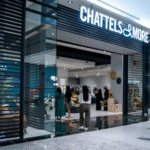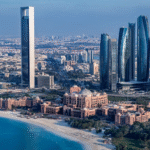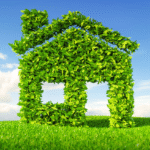Now Reading: UAE Property Market: 6 Government Incentives Supporting Developers in 2025
-
01
UAE Property Market: 6 Government Incentives Supporting Developers in 2025
UAE Property Market: 6 Government Incentives Supporting Developers in 2025

Table of Contents
The UAE real estate market, valued at AED 893 billion ($243.1 billion) with 331,300 transactions in 2024, continues to thrive, projecting 5-8% price growth and 5-11% rental yields in 2025, per skylineholding.com. Government incentives play a pivotal role in supporting developers, aligning with the UAE’s Vision 2030, a 6.2% GDP growth forecast, and a tourism target of 20 million visitors by 2027, per deloitte.com.
These policies, enforced by the Dubai Land Department (DLD), Real Estate Regulatory Agency (RERA), and Abu Dhabi’s Department of Municipalities and Transport (DMT), foster sustainability, affordability, and digital innovation.
Below are six key government incentives supporting developers in 2025, their impact, and actionable steps for compliance.
1. Tax Exemptions and Subsidies for Affordable Housing
Description: Abu Dhabi’s Law No. 2 of 2025 and Dubai’s Affordable Housing Strategy offer tax exemptions and subsidies for developers meeting affordable housing quotas, per thebusinessyear.com. Projects in areas like Al Reef and JVC (apartments from AED 550,000, $149,700) qualify for 0% corporate tax until 2026 and 5% VAT exemptions on construction materials, per veersant.com.
Impact: Reduces development costs by 5-10%, enabling competitive pricing (e.g., AED 550,000 vs. AED 1 million for luxury units). Increases supply for middle-income buyers, boosting transaction volumes by 25% in affordable segments, per gulfnews.com. Yields 7-8% with 5-8% capital gains by 2026, per uniqueproperties.ae.
Action: Register projects with DLD or DMT, submit affordable housing plans for approval, and retain documentation for tax audits. Verify Small Business Relief eligibility.
2. Expedited Approvals for Green Projects
Description: The National Green Certificates Program, expanded in 2025, offers fast-tracked approvals for projects meeting sustainability standards (e.g., Estidama Pearl, UAE Green Building certification). Developers using solar panels and energy-efficient designs in projects like Masdar City (apartments from AED 800,000, $217,600) receive priority permitting, per yallablog.ae.
Impact: Cuts approval times by 30%, reducing project delays and costs by 5%, per properties.market. Green projects attract 80% of investors seeking eco-friendly properties, commanding 8-12% higher values, per retyn.ai. Yields 6-8% with 5-10% capital gains by 2026.
Action: Submit sustainability plans to DLD or DMT, verify green certifications, and document energy-saving features (e.g., 15% energy, 20% water savings) for compliance.
3. Flexible Payment Plan Mandates
Description: Dubai and Abu Dhabi regulations require 40% of new projects in 2025 to offer flexible payment plans (e.g., 10% down, 50/50 schedules), per veersant.com. Developers like Emaar and Aldar, offering plans in Dubai Creek Harbour (apartments from AED 1.45 million, $394,800), must register with DLD or DMT, per exclusive-links.com.
Impact: Boosts buyer participation by 25%, especially for first-time investors, increasing off-plan sales (63% of 2024 transactions), per gulfnews.com. Reduces developer financing costs by spreading payments, supporting 6-9% yields and 8-12% capital gains by 2026, per gulfbusiness.com.
Action: Register payment plans with DLD or DMT, ensure milestone-based disbursements, and use DLD-registered brokers to market plans.
4. Golden Visa-Linked Incentives
Description: The Golden Visa program, expanded in 2025, grants developers priority project approvals if their properties meet the AED 2 million ($544,600) threshold for investor residency, per globalpropertyguide.com. Projects like Yas Island (apartments from AED 1.2 million, $326,700) benefit, per gtlaw.com.
Impact: Attracts 15% more foreign investment, particularly in luxury segments, per natlawreview.com. Enhances project marketability, driving 95% occupancy in high-end areas and 6-9% yields with 6-9% capital gains by 2026, per thebusinessyear.com.
Action: Verify project eligibility for Golden Visa with DLD or DMT, market properties to international investors, and ensure AML/KYC compliance for transactions above AED 5 million.
5. Blockchain and Tokenisation Support
Description: Dubai’s Real Estate Evolution Space Initiative (REES), launched in 2024 and expanded in 2025, supports developers using blockchain for tokenised property sales, per globalgovernmentfintech.com. Projects like those in Dubai Creek Harbour can offer fractional ownership, with transactions in AED via licensed platforms, per gtlaw.com.
Impact: Reduces transaction costs by 2-3% and broadens investor access, increasing sales by 20%, per aurantius.ae. Enhances transparency, supporting 6-6.8% yields and 8-12% capital gains by 2026, per gulfbusiness.com.
Action: Partner with licensed virtual asset providers, register tokenisation platforms with DLD, and ensure compliance with Central Bank AML regulations. Retain blockchain transaction records.
6. Infrastructure Investment Partnerships
Description: The UAE government offers public-private partnership (PPP) incentives, including land grants and co-funding for infrastructure in projects like Dubai South (apartments from AED 800,000, $217,600), per khaleejtimes.com. Developers benefit from reduced land acquisition costs, per damacproperties.com.
Impact: Cuts development costs by 10-15%, enabling competitive pricing and 15-25% capital gains by 2030 in areas like Dubai South, per gulfnews.com. Supports 6-8% yields with 85% occupancy driven by infrastructure like Al Maktoum Airport.
Action: Apply for PPP grants via DLD or DMT, verify infrastructure compliance with UAE’s 2040 Urban Master Plan, and use DLD-registered brokers.
Why These Incentives Matter
These incentives align with the UAE’s 7.8% GDP contribution from real estate, a 5% population growth (12.5 million by 2025), and infrastructure investments (AED 11.8 billion in 2018-2023), per gulfnews.com. They support developers in delivering 182,000 new units by 2026, addressing demand from expatriates and tourists, per colife.ae.
Projects like Masdar City and Dubai South leverage sustainability and infrastructure incentives, while tokenisation and Golden Visa policies attract global investors, per globalcitizensolutions.com. Posts on X highlight developer enthusiasm for PPPs and green incentives, per @jobxdubai. Challenges include rising construction costs (10% in 2024) and potential oversupply, per agbi.com.
Tax Tools for Developers
U.S.-UAE DTA: Credit UAE taxes via IRS Form 1118, preserving 10-15% returns.
VAT Recovery: Recover 5% input VAT on construction/furnishings (e.g., AED 25,000 on AED 500,000) for VAT-registered developers.
Zakat for Muslim Developers: Pay 2.5% Zakat on profits (e.g., AED 2,500 on AED 100,000). Consult Islamic scholars.
Market Outlook and Challenges
The UAE market projects 5-8% price growth and 5-11% yields in 2025, driven by tourism and infrastructure, per damacproperties.com. Risks include global economic pressures and compliance costs for AML/KYC (transactions above AED 5 million), with penalties up to AED 500,000 for non-compliance, per gtlaw.com. Escrow and refund mechanisms mitigate project risks, per hausandhaus.com.
Conclusion
The UAE’s 2025 incentives—tax exemptions, green project approvals, flexible payment plans, Golden Visa benefits, blockchain support, and PPPs—empower developers to deliver high-yield (5-11%), high-growth (5-25%) projects.
Areas like Dubai Creek Harbour, Masdar City, and Dubai South thrive under these policies. Compliance with DLD, DMT, and RERA ensures developers maximize returns in this dynamic market. UAE Property Government Incentives
read more: UAE Real Estate: 5 Smart Cities Driving Future Residential Demand in 2025






















